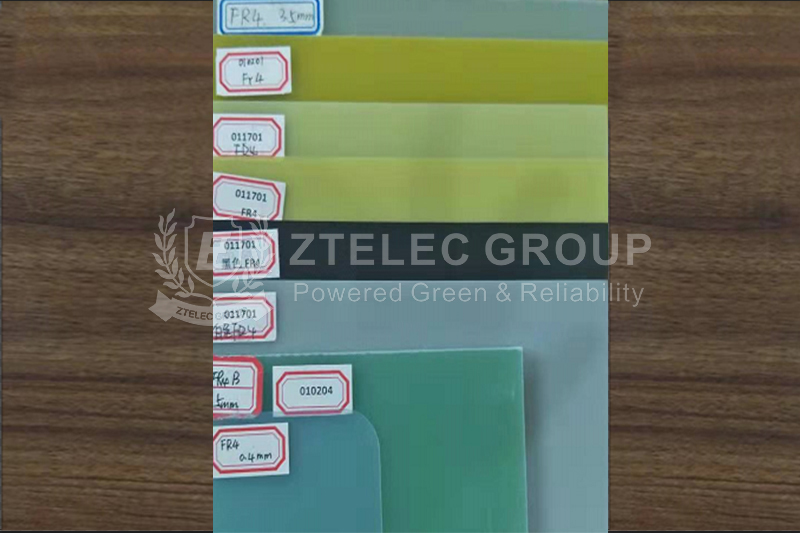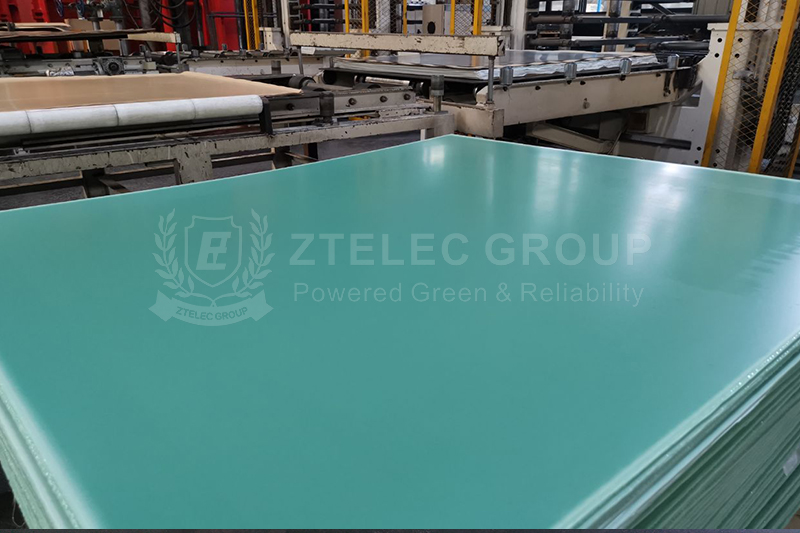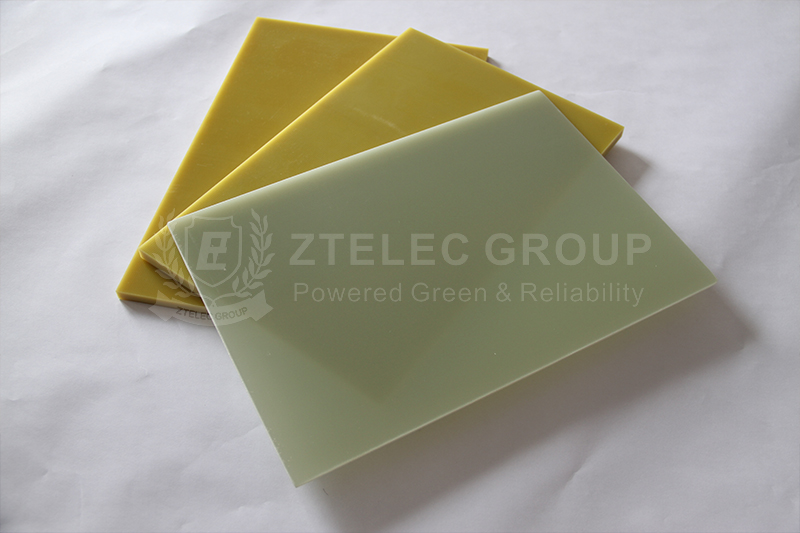The electronic industry is developing rapidly. Printed circuit boards (PCBs) are the core basic carriers of electronic devices. The material performance is crucial and directly determines the reliability, operating efficiency and service life of the products.
FR4 is the mainstream choice among epoxy glass fiber substrate materials. It has excellent mechanical strength, excellent electrical insulation performance, and the cost is also within a controllable range. With these advantages, FR4 is widely used in many fields such as consumer electronics, automobile manufacturing, and industrial control.
But nowadays, electronic devices are developing in the direction of high power, miniaturization, and high frequency. Under this trend, the thermal stability problem of FR4 epoxy sheet in high temperature environments has gradually become prominent, becoming a key bottleneck restricting the performance improvement of electronic equipment. This article will discuss the challenges faced by thermal stability, high temperature performance test methods, and typical application scenarios, and deeply analyze the performance and optimization direction of FR4 materials at extreme temperatures.

In high temperature environments, the problems faced by FR4 materials mainly involve two aspects: physical and electrical performance.
In terms of physical performance, high temperature can easily soften, expand, and even delaminate the material. These changes will directly cause the PCB structure to deform, thereby reducing the interlayer bonding force. In severe cases, it will also cause the solder joints to fail. Once the solder joints fail, the circuit system connection is interrupted, and the electronic equipment cannot operate normally.
In terms of electrical performance, high temperature will cause changes in dielectric constant and loss factor, affecting the integrity of signal transmission. Especially in high-frequency circuits, such changes may cause signal distortion, delay, and even interference, seriously reducing the communication quality and operating efficiency of electronic equipment.
In addition, long-term exposure to high temperature will accelerate the aging of FR4 epoxy fiberglass sheet. Aging will cause the PCB performance to decay continuously and significantly shorten the service life of electronic equipment. Therefore, a comprehensive and scientific evaluation of the comprehensive performance of FR4 materials in high temperature environments is crucial to ensure the reliability of electronic products.

To comprehensively and accurately evaluate the thermal stability of FR4 materials, it is necessary to combine laboratory testing with actual application scenario simulation. The focus is on structural stability, electrical performance, heat dissipation and thermal management.
The thermal shock test simulates extreme environmental changes from extremely low temperature to high temperature through rapid temperature cycling. Through this test, observe whether the material has cracking, delamination or dimensional changes, so as to quickly detect the structural bearing capacity of the material under extreme temperature changes.
The long-term high-temperature aging test is to place the material in a high-temperature environment for continuous operation. During the operation, the attenuation of its mechanical strength and interlayer bonding force is regularly tested to evaluate the durability of the material and determine its performance change trend in a long-term high-temperature environment.
The dielectric property analysis mainly studies the changing trend of dielectric constant and loss factor in high temperature environment to ensure the stability of signal during transmission.
The insulation performance verification evaluates the electrical safety of materials under extreme conditions by detecting leakage current and breakdown voltage in high temperature environment to avoid safety hazards such as leakage of electronic equipment when running at high temperature.
The thermal conductivity analysis aims to evaluate the thermal conductivity of the material itself and its synergistic effect with heat dissipation structures such as metal substrates and heat sinks.
With the help of thermal simulation and simulation software, the temperature distribution of PCB under actual working conditions can be predicted. According to the prediction results, the heat dissipation path and structural design are optimized to improve the heat dissipation performance of electronic equipment.

The thermal stability of FR4 materials varies significantly in different industries. The following uses cases in three typical fields to analyze its application challenges and solutions.
The environment in the engine compartment of an automobile is harsh, with high temperatures, strong vibrations, and the risk of oil erosion. Some automotive parts suppliers used ordinary FR4 materials, which caused frequent failures of the electronic control unit (ECU) due to insufficient interlayer bonding at high temperatures.
To solve this problem, they switched to high-heat-resistant FR4 materials and optimized the heat dissipation structure, such as adding heat sinks or thermal pads. In the end, the product successfully passed the automotive-grade high-temperature test, the failure rate was greatly reduced, and the stable operation of the automotive electronic system was effectively guaranteed.
In the industrial field, devices such as inverters and servo drives have high power density, and the local hot spot temperature of PCBs often exceeds the normal threshold.
Some industrial equipment manufacturers integrate heat dissipation modules such as copper blocks and heat pipes on FR4 substrates, combined with air cooling design. Through these measures, the module temperature rise was successfully reduced, the maintenance cycle of the equipment was effectively extended, and the stability and reliability of the operation of industrial equipment were improved.
Consumer electronics products such as smartphones and tablets have extremely high requirements for PCB thickness and heat dissipation efficiency.
During the product development process, some manufacturers use high thermal conductivity FR4 materials and match them with multi-layer graphene heat dissipation films. This solution achieves efficient thermal management in a compact space, while meeting the high-frequency signal requirements of 5G communication modules, bringing users a better user experience.
If you need our products please write down any questions, we will reply as soon as possible.
There are three ISO certificates for quality certification. The certificates will be shown later. ISO
After receiving the advance payment, the production cycle is 15-25 days. And the transportation cycle should be calcul……
We supply with installation guide and user manual for each transformer. If you do not understand them. We will offer v……